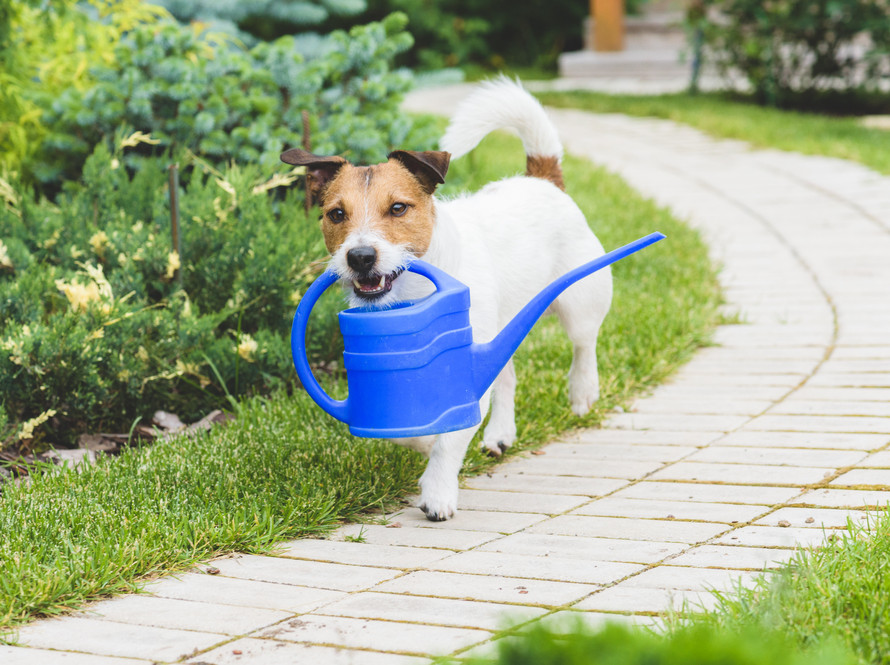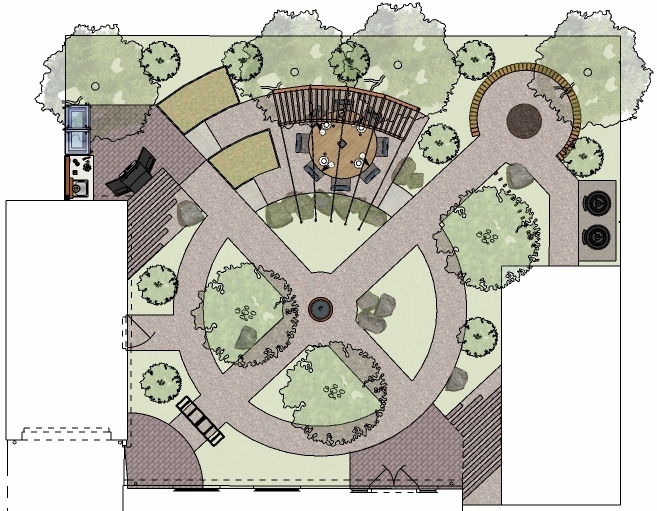Garden Design tips for creating a Dog-Friendly Garden
Garden Design tips for creating a Dog-Friendly Garden
Designing a garden that accommodates your furry friend’s needs is a wonderful way to enhance their quality of life and ensure it does not have a detrimental impact on your enjoyment of the garden.
A dog-friendly garden combines practicality, safety, and aesthetics to create an environment where your canine companion can play, explore, and relax. Here we will provide you with valuable tips and ideas to help you design a dog-friendly garden that both you and your four-legged friend will love.
- Create Defined Paths and Boundaries: Dogs love to explore, so creating defined paths and boundaries will help guide them and protect sensitive areas of your garden. Install low fences, decorative edging, or natural barriers to mark off specific zones. Consider using materials like decorative rocks, pavers, or gravel to create clear pathways that guide your dog’s movement and prevent trampling on delicate plants or flower beds. This garden design in Chinnor was designed very much with our client’s dog in mind. Their dog loved to run around so the starting point for the design was a circular path with intersecting diagonal paths. These paths created several routes for the dog to run round and also provided a sense of journey through the space for the owners.

- Choose Pet-Friendly Plants: When selecting plants for your garden, consider those that are safe for dogs. Avoid toxic plants like lilies, azaleas, and daffodils, which can be harmful if ingested. We were intending to plant a grape vine in this garden, but grapes are toxic to dogs and since the vine would have overhung the seating area, we decided against it. Choose plants, especially those that are near paths, such as Roses or Lavender that are safe for dogs.
- Incorporate a Dog-Friendly Surface: Choose a dog-friendly surface that is durable, easy to clean, and comfortable for your dog to walk and play on. Natural grass or gravel, can be excellent options. Natural grass provides a soft and familiar feel, but it may require maintenance and repair. We have used ‘self-binding gravel’ which offers durability, requires minimal maintenance, and provides a flat and safe surface for your dog to enjoy.
- Provide Shade and Shelter: Just like humans, dogs need shade and shelter to stay protected from the elements. Incorporate shaded areas in your garden, such as trees, awnings, or purpose-built structures like doghouses or covered gazebos. Ensure there is plenty of shade throughout the day to keep your furry friend comfortable, especially during hot summer months.
- Include Dog-Friendly Features: Introduce dog-friendly features that add excitement and interest to your garden. Install a shallow splash pool or a water fountain where your dog can cool off on hot days. Create a digging pit filled with soft sand or mulch to satisfy their natural instinct to dig. Incorporate interactive toys like treat-dispensing puzzles or agility equipment for mental stimulation and physical exercise.
- Secure Boundaries and Escape Prevention: Maintain secure boundaries to prevent your dog from wandering off or getting into unsafe areas. Ensure your fencing is in good condition and free from gaps or loose boards. Consider adding an additional layer of protection by creating a separate dog run or installing a dog-friendly gate to restrict access to certain parts of your garden when needed. This client’s dog was a rescue dog and got upset when next door’s children were making noise in the garden. The dog would leap at the fence bordering their garden, and to prevent this from happening we incorporated a pergola structure and planting beds to act as a ‘buffer’ between the client and their neighbours garden.
- Avoid Harmful Chemicals: Use pet-safe products when it comes to fertilizers, pesticides, and herbicides in your garden. Chemicals found in some common gardening products can be harmful to dogs if ingested or absorbed through their paws. Opt for organic or pet-friendly alternatives to keep your garden free from potentially harmful substances.
- Consider Proper Drainage: Incorporate proper drainage solutions in your garden to prevent water from pooling and creating muddy areas that can be messy for both you and your dog. Incorporate permeable surfaces, such as gravel or permeable pavers, to allow water to drain effectively. This will help maintain a clean and dry garden that your dog can enjoy all year round.

